The following analysis of select counties of the Northwest Oregon and Southwest Washington real estate market is provided by Windermere Real Estate Chief Economist Matthew Gardner. We hope that this information may assist you with making better-informed real estate decisions. For further information about the housing market in your area, please don’t hesitate to contact your Windermere Real Estate agent.
Regional Economic Overview
Employment in the Oregon counties covered by this report continues to expand, though the pace of growth has started to slow. As it stands, employment levels are still down by 23,600 from the 2020 pre-COVID peak, with Multnomah County accounting for almost 22,000 of the jobs that have yet to return. That said, the unemployment rate in the region was a respectable 4.2%, matching the level we saw at the same time last year. Unfortunately, the jobless rate is low because of a declining workforce, not from employment growth. In Southwest Washington, the pace of job gains is also slowing. However, the area has recovered all the jobs lost during the pandemic and added almost 17,000 more. Unemployment was 5.9%—a level we have not seen since early 2021—as the labor force has been growing at quite a rapid rate.
Northwest Oregon and Southwest Washington Home Sales
❱ In the first quarter of 2023, 6,751 homes sold, which was a drop of 34.7% from the same period in 2022 and down 18.8% from the fourth quarter of 2022.
❱ I believe the biggest issue is supply. The spring market appears to not only have come late (starting in March) but has also been far less robust than normal.
❱ Sales fell across the board compared to both the first quarter of 2022 and the final quarter of 2022.
❱ Though the lack of inventory cannot be attributed to just one factor, it could be because homeowners do not want to lose the historically low interest rate on their current mortgage. If this is the case, the market may be supply-starved for quite some time.
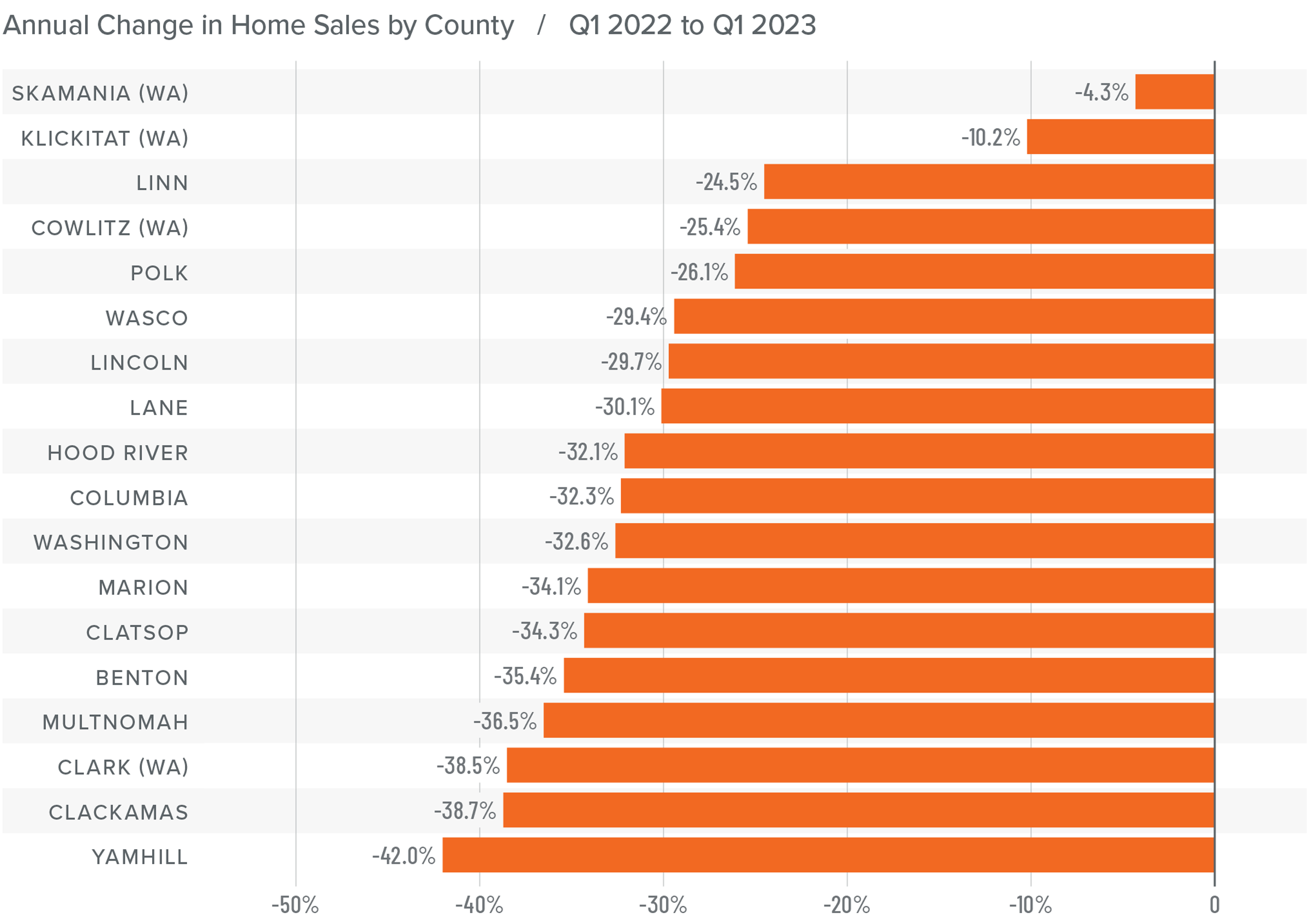
Northwest Oregon and Southwest Washington Home Prices
❱ The average home sale price in the region fell 5.2% year over year and was down 3.1% compared to the fourth quarter of 2022.
❱ Compared to the final quarter of 2022, home prices fell in nine counties but rose in the other nine. Hood River and Skamania counties had double-digit price growth over the prior quarter, but these are very small markets and are prone to significant swings.
❱ All but seven counties saw average home prices fall compared to a year ago. In the markets where prices rose, the pace of growth was generally slower than has been the case for a number of years.
❱ Half of the counties in this report saw listing prices rise, while the other half saw them fall. This is a little counterintuitive given the lack of inventory, but it may be that prices in some markets simply rose too much in recent years and that affordability is still a hindrance.
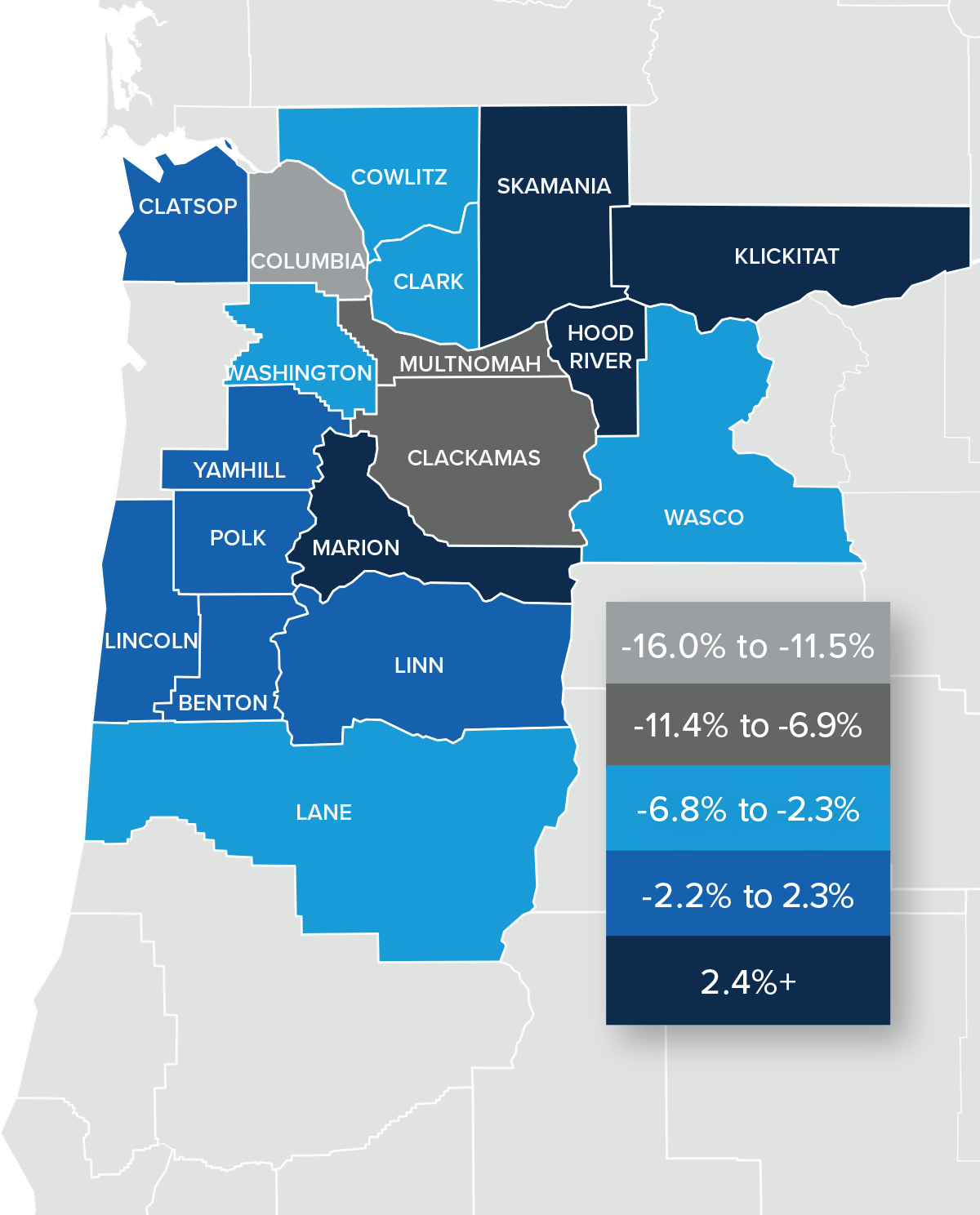
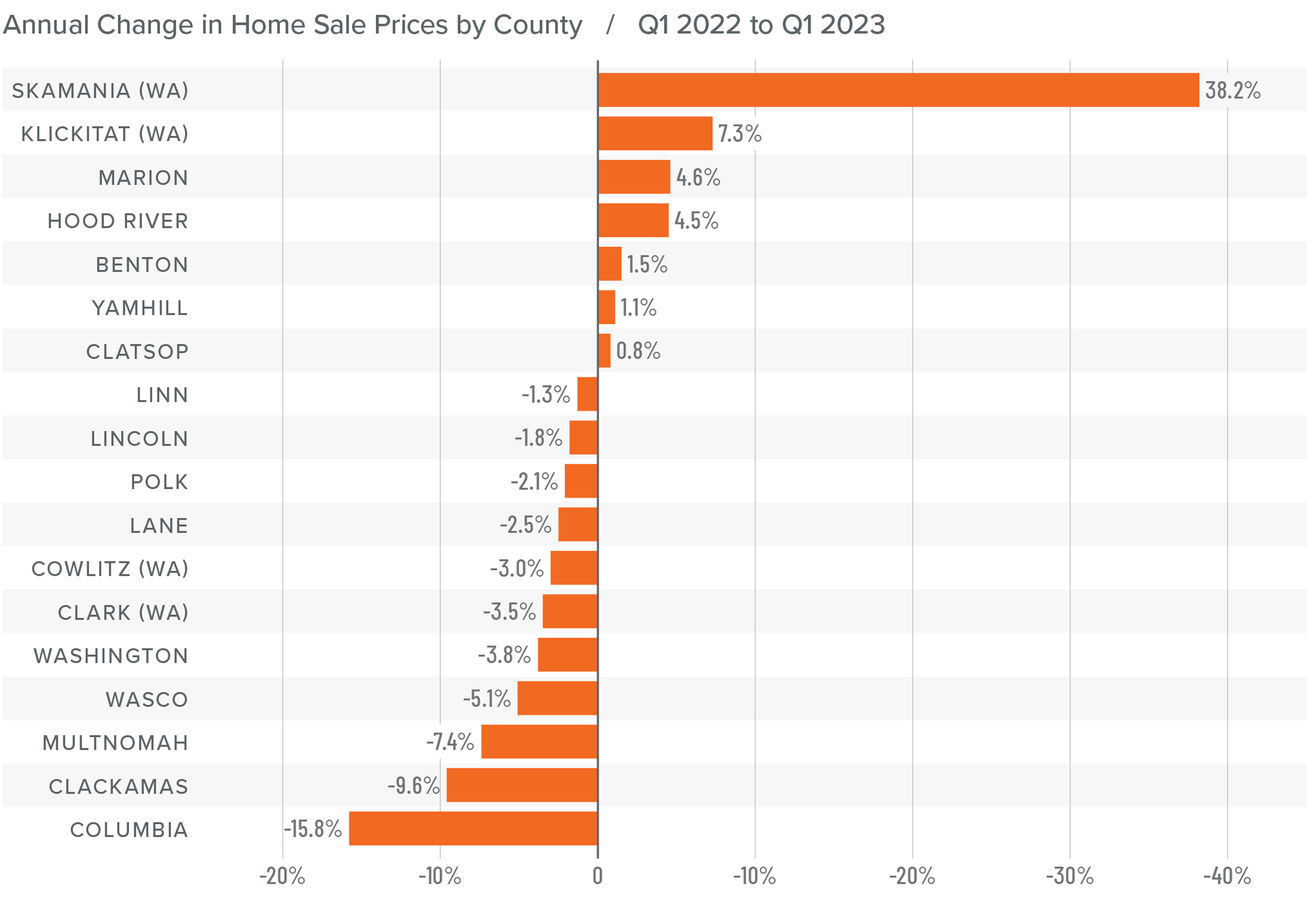
Mortgage Rates
Rates in the first quarter of 2023 were far less volatile than last year, even with the brief but significant impact of early March’s banking crisis. It appears that buyers are jumping in when rates dip, which was the case in mid-January and again in early February.
Even with the March Consumer Price Index report showing inflation slowing, I still expect the Federal Reserve to raise short-term rates one more time following their May meeting before pausing rate increases. This should be the catalyst that allows mortgage rates to start trending lower at a more consistent pace than we have seen so far this year. My current forecast is that rates will continue to move lower with occasional spikes, and that they will hold below 6% in the second half of this year.
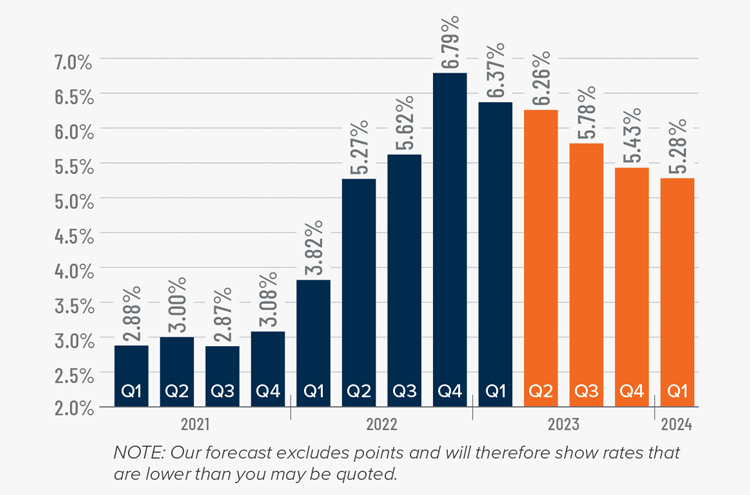
Northwest Oregon and Southwest Washington Days on Market
❱ The average time it took to sell a home in the region rose 22 days compared to the same period in 2022. It took 14 more days for a home to go under contract compared to the final quarter of 2022.
❱ The average time it took to sell a home in the first quarter of 2023 was 70 days.
❱ With the exception of Benton, all of the counties in this report saw the length of time it took for a home to go under contract rise compared to the first quarter of 2022. Compared to the fourth quarter of 2022, market time fell in Benton, Clatsop, and Lincoln counties.
❱ Unlike the fourth quarter of 2022, when longer market time suggested that additional supply was giving buyers more choices, it’s likely that uncertainty about the housing market held some buyers back in the first quarter of 2023.
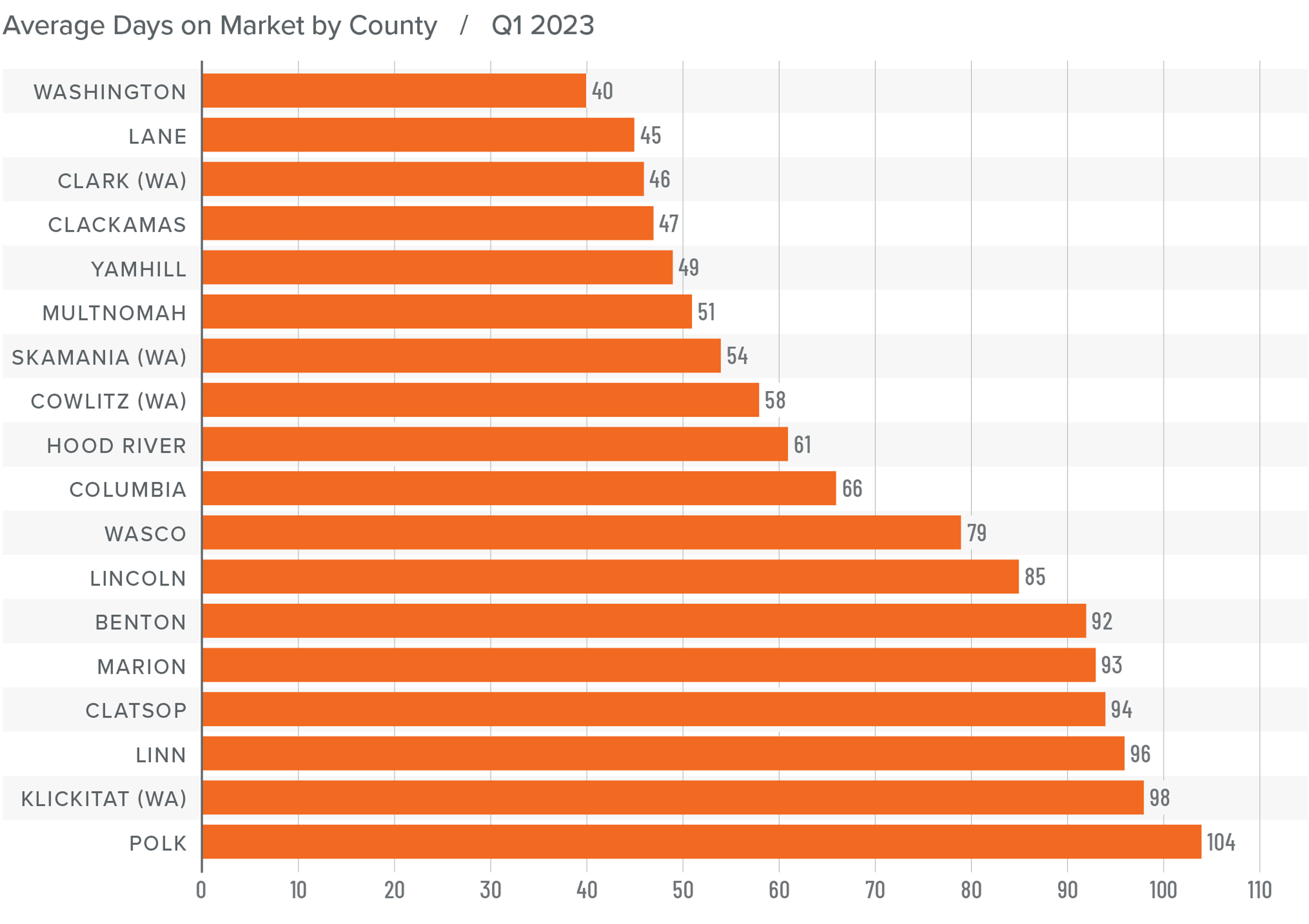
Conclusions
This speedometer reflects the state of the region’s real estate market using housing inventory, price gains, home sales, interest rates, and larger economic factors.
Mortgage rates in the first quarter were lower than at the end of 2022, which generally favors buyers. Additionally, falling listing and home sale prices are also creating favorable conditions for buyers. The data suggests that buyers have a slight advantage in many, but not all, markets in the region.
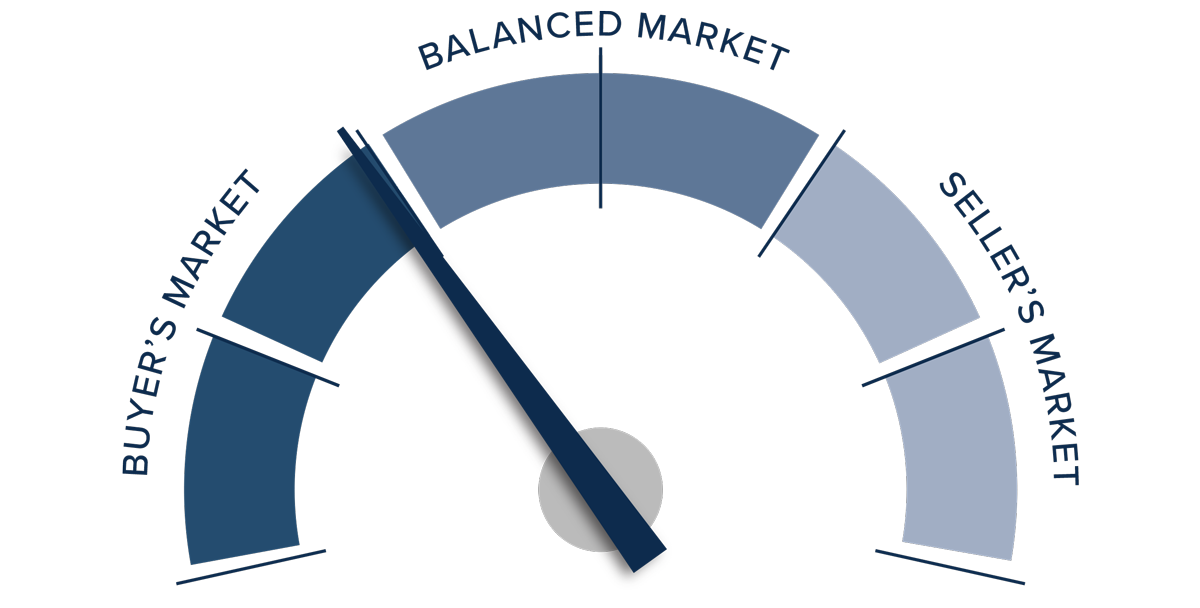
As a result, for the first time in over a decade, I am giving them a slight advantage over home sellers. That said, I can easily see it returning more toward sellers as we approach the summer. Only time will tell.
About Matthew Gardner

As Chief Economist for Windermere Real Estate, Matthew Gardner is responsible for analyzing and interpreting economic data and its impact on the real estate market on both a local and national level. Matthew has over 30 years of professional experience both in the U.S. and U.K.
In addition to his day-to-day responsibilities, Matthew sits on the Washington State Governors Council of Economic Advisors; chairs the Board of Trustees at the Washington Center for Real Estate Research at the University of Washington; and is an Advisory Board Member at the Runstad Center for Real Estate Studies at the University of Washington where he also lectures in real estate economics.
 Facebook
Facebook
 X
X
 Pinterest
Pinterest
 Copy Link
Copy Link



